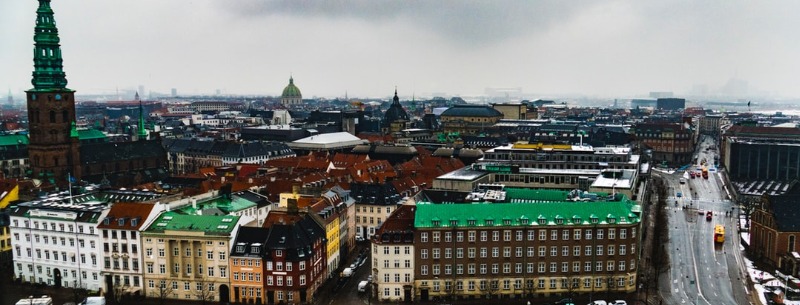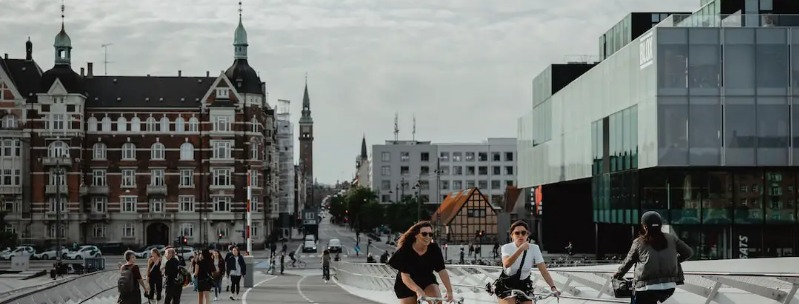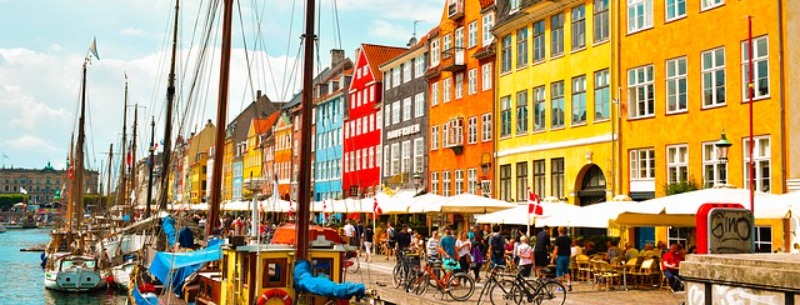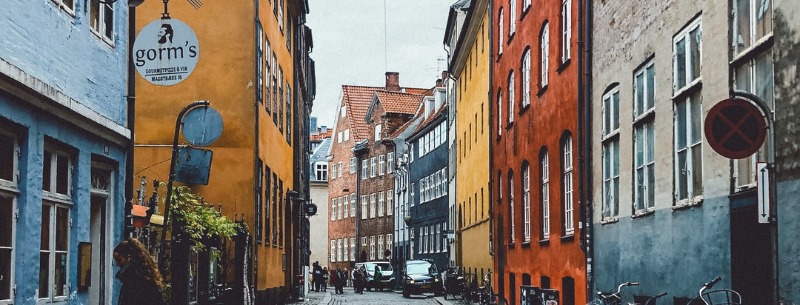2024 Denmark Vacation Guide
Delicately balanced between Scandinavia proper and mainland Europe, Denmark is a difficult country to pin down. In many ways it shares the characteristics of both regions: it’s an EU member and has prices and drinking laws that are broadly in line with those in the rest of Europe. But Denmark’s social policies and its style of government are distinctly Scandinavian: social benefits and the standard of living are high, and its politics are very much that of consensus.
Denmark is the easiest Scandinavian country in which to travel, both in terms of cost and distance, but its landscape is the region’s least dramatic: very green and flat, largely farmland interrupted by innumerable pretty villages. Apart from a scattering of small islands, three main landmasses make up the country – the islands of Zealand and Funen and the peninsula of Jutland, which extends northwards from Germany.
Top Attractions in Denmark
The vast majority of visitors make for Zealand (Sjælland), and, more specifically, Copenhagen, the country’s one large city and an exciting focal point, with a beautiful old center, a good array of museums and a boisterous nightlife. Zealand’s smaller neighbor, Funen (Fyn), has only one positive urban draw in Odense, and otherwise is a sedate place, renowned for its cute villages and the sandy beaches of its fragmented southern coast. Only Jutland (Jylland) is far enough away from Copenhagen to enjoy a truly individual flavor, as well as Denmark’s most varied scenery, ranging from soft green hills to desolate heathlands. Århus and Aalborg are two of the liveliest cities outside the capital.
Skagen
Situated at the northern tip of Jutland, Skagen is famous for its fantastic light and windswept, heather-clad landscape, which drew the group known as the Skagen artists here in the late nineteenth century.
Kronborg
Watch out for the ghost of Hamlet’s father as you walk the ramparts of Helsingør’s Kronborg slot (castle), the model for Shakespeare’s Elsinore.
Ribe
The marshlands surrounding picturesque Ribe in southern Jutland have inhibited industrial development, leaving one of Denmark’s oldest towns virtually unchanged since medieval times.
The Roskilde Festival
The Roskilde Festival, held on the last weekend in June, is one of the largest open-air rock festivals in Europe, attracting more than 90,000 people and featuring many big names.
Christiania
Christiania, Copenhagen’s former military barracks squatted by hippies in the Sixties and declared a “free city”, is still a haven for the counter-culture – it has galleries, concerts, bars and some of the best restaurants in the city.
Århus
Århus is Denmark’s second city, and it’s often regarded as the cultural capital. It’s small enough to get to know easily but has plenty of pretty medieval streets, old churches, museums, cafés and bars to fill your days and nights.
Odense
Odense, capital of the island of Funen, was the birthplace of Hans Christian Andersen and composer Carl Nielsen – and its old streets of half-timbered houses harbor an unexpectedly lively nightlife.
Getting Around Denmark
Despite being an island country, Denmark is a swift and easy place in which to travel. All types of public transport – trains, buses and ferries – are punctual and efficient, and the timetables are well integrated.
Trains
Trains are easily the best way to get about. Danske Statsbaner – Danish State Railways – run an exhaustive and reliable network
- Copenhagen to: Aalborg (hourly; 4hr 40min); Århus (30 daily; 3hr 10min); Esbjerg (12 daily; 3hr 15min); Helsingør (every 20 min; 1hr); Odense (45 daily; 1hr 30min); Ringsted (every 15min; 45min); Roskilde (every 12min; 22min).
- Århus to: Aalborg (34 daily; 1hr 25min); Frederikshavn (every 2hr; 3hr); Viborg (every 30min; 1hr).
- Esbjerg to: Århus (hourly, change at Fredericia; 2hr 10min); Fredericia (hourly; 1hr); Ribe (hourly; 35min).
- Fredericia to: Århus (38 daily; 1hr 10min).
- Frederikshavn to: Aalborg (23 daily; 1hr 10min); Skagen (12 daily; 1hr 15min).
- Helsingør to: Hillerød (hourly; 30min).
- Odense to: Århus (30 daily; 1hr 30min); Esbjerg (30 daily; 2hr).
- Roskilde to: Kalundborg (hourly; 1hr 15min)
Buses
- Copenhagen to: Aalborg (3 daily; 4hr 45min); Århus (6 daily; 3hr 30min); Hanstholm (1 daily; 8hr 45min); Helsingør (30 daily; 1hr).
- Aalborg to: Esbjerg (3 daily; 4hr 45min).
- Århus to: Copenhagen (6 daily; 3hr 30min).
- Frederikshavn to: Esbjerg (3 daily; 5hr); Skagen (8 daily; 1hr).
- Kerteminde to: Nyborg (23 daily; 30min).
- Odense to: Kerteminde (46 daily; 40min); Nyborg (39 daily; 50min).
Ferries
- Kalundborg to: Århus (ferry 2-8 daily; 3hr; catamaran 3-5 daily; 1hr 40min).
Food in Denmark
Traditional Danish food centers on meat and fish, served with potatoes and another, usually boiled, vegetables.
Breakfast
Breakfast ( morgenmad ) can be the tastiest Danish meal, and almost all hotels offer a sumptuous breakfast as a matter of course, as do youth hostels: a table laden with cereals, bread, cheese, boiled eggs, fruit juice, milk, coffee and tea for around 40kr. Breakfast elsewhere is less substantial, although brunch, served from 11 am until early afternoon, is a filling option for late starters consisting of variations of American, English, French or Australian breakfasts for 40-70kr. Later in the day, a tight budget may leave you dependent on self-catering.
Snacks
As for snacks , you can buy smørrebrød – open sandwiches heaped with meat, fish or cheese, and assorted trimmings – for 15-45kr from special shops, at least one of which will be open until 10 pm. There are also fast-food stands ( pølsevogn ) in all main streets and at train stations, serving various hot sausages ( pølser ), toasted sandwiches ( parisertoast ) and chips ( pommes frites ). If you just want a cup of coffee or tea, cafés serve both; help it down with a Danish pastry ( wienerbrød ), tastier and much less sweet than the imitations sold elsewhere.
Lunch
You can find an excellent-value lunch ( frokost ) simply by walking around at lunchtime and choosing from the signs chalked up outside a café, restaurant or bodega (a bar which sells no-frills food). You’ll often see the word tilbud , which refers to the “special” priced dish, or dagens ret , “dish of the day” – a plate of chilli con carne or lasagne for around 50kr. A three-course set lunch will cost you about 80-100kr and open buffets where you can help yourself to as much as you like will set you back 60-80kr. You can also usually get a choice of three or four smørrebrød for about 75kr. Elsewhere, the American burger franchises are commonplace, as are pizzerias, many of which offer special deals such as all-you-can-eat-salad with a basic pizza for 50kr. You can also get a filling but ordinary self-service meat, fish or omelet lunch in a supermarket cafeteria for 50-90kr.
Dinner
Dinner ( aftensmad ) presents as much choice as does lunch, but the cost is likely to be much higher, although many youth hostels serve filling evening meals for 50-60kr. For 70-90kr you can fill up in an ethnic restaurant, most commonly Chinese and Middle Eastern, many of which, besides à la carte dishes, have a help-yourself table. Sadly, the same Danish restaurants that are promising for lunch turn into expense-account affairs at night although many still will have good-value buffets. If you plan to save money by eating in, head for Netto supermarkets, where the food and drink are cheap and of excellent quality.

Copenhagen, Denmark
Copenhagen (København) is Scandinavia’s most vibrant and affordable capital, and one of Europe’s most user-friendly cities. Small and welcoming, it’s a place where people rather than cars set the pace, as evidenced by the multitude of pavement cafés and the number of thoroughfares that have been given over to pedestrians and bicycles. Amenable and relaxed, it also offers a range of entertainment which belies its relatively modest size: at night there are plenty of cozy bars and an intimate club and live-music network that could hardly be bettered, while in summer, especially, there’s a varied range of entertainment as the city’s population takes to the streets. This is not to mention a beckoning range of cultural attractions, including major national museums, a selection of magical art galleries, a healthy assortment of performing arts events, and one of Europe’s most interesting film scenes.
Attractions
Physically, much of Copenhagen dates from the seventeenth and eighteenth centuries, a cultured ensemble of handsome renaissance palaces, parks, and merchant houses laid out around the waterways and canals that give the city, in places, a pronounced Dutch flavor. Successive Danish monarchs left their mark on the place, in particular Christian IV, creator of many of the city’s most striking landmarks – including Rosenborg Slot and the districts of Nyboder and Christianshavn – and Frederik III, who graced the city with the palaces of Amalienborg and the grandiose Marmorkirke church, along with the elegant royal quarter of Frederikstad in which they are located. These landmarks remain the highest points in a refreshingly low and undeveloped skyline which continues to measure things on an emphatically human scale.
History of Copenhagen
Historically, Copenhagen owes its existence to its position on the narrow Øresund strait separating Denmark from Sweden and commanding the entrance to the Baltic – one of the great trading routes of medieval Europe and now the site of the region’s grandest engineering project, the massive Øresund Bridge. It’s this location, poised on the dividing line between Europe and Scandinavia, that continues to give Copenhagen its distinctive character. Compared to the relatively staid capitals further north, Copenhagen has a decidedly European flavor, from the innocent hedonism of the famous Tivoli gardens to the sleazy goings-on around Vesterbro’s red-light district. It’s no surprise that the city’s most famous export is a beer, Carlsberg, and the freedom with which it flows in the city’s thousands of bars is in stark contrast to the puritanical licensing laws found elsewhere in Scandinavia – a fact attested to by the thousands of thirsty Swedes who descend on the city each year. Yet Copenhagen is also a flagship example of the Scandinavian commitment to liberal social values, as exemplified by its laid-back attitudes to everything from gay marriages to toplessness and pornography, and is also home to the unique “Free City” of Christiania, whose drop-out community is one of Europe’s most intriguing social experiments.
For all its twentieth-century success, however, the new millennium finds Copenhagen facing an important set of changes and challenges. On the one hand, the magnificent new Øresund Bridge, opened in 2000 to link the city with Malmö and southern Sweden, has given Copenhagen the infrastructure to become the western Baltic’s leading urban center, and there are many who would like to see the city develop into a suitably internationalist and forward-looking metropolis. On the other hand, there are many Copenhageners who regard the bridge, at best, as an irrelevance or, at worst, as a symbol of all those foreign influences that threaten to undermine traditional Danish values. Above all, these influences are typified by Copenhagen’s burgeoning immigrant community, and simmering racial tensions – and the resulting rising power of the right-wing – pose increasing challenges to the city’s tolerant image. At the same time, Denmark’s landmark decision in a referendum of October 2000 to opt-out of the single European currency also suggests a national desire to remain isolated from the continental mainstream, with the possible result that Copenhagen will be relegated to a position of provincial irrelevance. For all that, it’s worth remembering that the city’s occasional smugness and resistance to change is the result of its citizens’ pride in their capital and determination to protect its unique character, and as a visitor, you’ll be made to feel welcome wherever you go, especially since absolutely everybody speaks English.
Copenhagen, as any Dane will tell you, is no introduction to Denmark – indeed a greater contrast with the sleepy provincialism of the rest of the country would be hard to find. Thanks to the rapid transport links which connect the capital with its surrounding countryside, however, you can enjoy all the pleasures of rural Zealand without ever being much more than an hour away from the bright lights of the capital. Amongst the many attractions which ring the city are the great castles of Kronborg (the “Elsinore Castle” of Shakespeare’s Hamlet ) and Frederiksborg , while the ancient Danish capital and ecclesiastical center of Roskilde , with its magnificent cathedral and museum of Viking ships, offers another enticing day-trip.
Esbjerg
The only large city in southern Jutland is ESBJERG , which was purpose-built as a deep-water harbor during the nineteenth century and has generally been thought of as being gloomy and run-down. However, it is in the process of massive redevelopment and its environment and cultural life are being dramatically improved.
The best way to get a sense of the city’s newness is by dropping into the Esbjerg Museum (daily 10am-4pm, from Sept to May closed Mon; tel 75.12.78.11; 30kr) at Torvegade 45, with its gallery devoted to amber along with a display recalling the so-called “American period” from the 1890s, when Esbjerg’s rapid growth matched that of the US gold-rush towns. Also within easy reach of the centre is the Museum of Art (daily 10am-4pm; tel 75.13.02.11; 30kr), although its modern Danish artworks are fairly limp affairs; you’d do better to visit the art displays in the recently refurbished Watertower next door (April-May & mid-Sept to Oct Sat & Sun 10am-4pm; June to mid-Sept daily 10am-4pm; 15kr), or the Museum of Printing at Borgergade 6 (June to mid-Sept daily noon-4pm; rest of the year Tues-Sun 1-4pm; 15kr), which has an entertaining assortment of hand-, foot- and steam-operated presses, as well as more recent printing machines. With more time to spare, take a bus (#1, #3, #8 or #40 from Skolegade) to the large Fisheries and Maritime Museum and Sealarium on Tarphagevej (daily: July-Aug 10am-6pm; Sept-June 10am-5pm; tel 76.12.20.00, www.fimus.dk ; 60kr), where you can cast an eye over the vestiges of the early Esbjerg fishing fleet and clamber around inside a spooky wartime bunker built by the Germans. The Sealarium is part of a seal research centre, which often rescues pups marooned on sandbanks, then feeds them for the public’s entertainment at 11am & 2.30pm daily. Opposite is Svend Wiig Hansen’s nine-meter-high Man meets the Sea , an austere, blandly modernist sculpture of four white seated figures.
Esbjerg’s tourist office is at Skolegade 33 (mid-June to Aug Mon-Fri 9am-5pm, Sat 9.30am-3.30pm; rest of the year Mon-Fri 10am-5pm, Sat 10am-1pm; tel 75.12.55.99, www.esbjerg-tourist.dk ), on a corner of the main square. The passenger harbor is a twenty-minute well-signposted walk from the city centre, and trains to and from Copenhagen connect directly with the ferries , using the harbour station. The main train station is at the end of Skolegade. The cheapest central hotels are Palads Hotel Cab Inn , Skolegade 14 (tel 75.18.16.00, www.cab-inn.dk; £25-30/$40-48/¬45-54) and the Park Hotel at Torvegade 31 (tel 75.12.08.68; £15-20/$24-32/¬27-36, not including breakfast). A little more upmarket is the Hotel Ansgar , Skolegade 36 (tel 75.12.82.44, www.hotelansgar.dk ; £30-35/$48-56/¬54-63). The youth hostel is at Gammel Vardevej 80 (tel 75.12.42.58, www.sima.dk/esbjerg ; £5-10/$8-16/¬9-18; closed Dec-Feb), 25 minutes’ walk, or buses #1, #4, #12, #40 or #41 from Skolegade. There is also an excellent campsite , Ådalens Camping , with cabins at Gudenåvej 20 (tel 75.15.88.22, www.adal.dk ), reached by buses #1, #14 and #7. The Esbjerg eating options are fairly limited if you’re on a tight budget, although you can get a decent two-course lunch for around 70kr at the Park Hotel , while inexpensive, mainly meat, dishes can be found at Jensens Bøfhus , Kongensgade 9. A good place to drink is Café Christian IX , overlooking Torvet, and Skolegade, in general, is flooded with places to go after dark.
Helsingør
Some 45km north of Copenhagen, on the coast facing Sweden, is Helsingør , one of the most popular day-trips from the capital. Most people head straight for the dramatic fortress of Kronborg, the “Elsinore Castle” of Shakespeare’s Hamlet , but there’s also an atmospheric old quarter in the small town center – for in-depth information, contact the tourist office (June-Aug Mon-Sat 9am-7pm, Sun 9am-noon; Sept-May Mon-Fri 9am-5pm, Sat 9am-1pm; tel 49 21 13 33, www.helsingorturist.dk ), just opposite the train station. The town is also a busy port, with 24-hour ferries bringing in hordes of Swedes from Helsingborg looking for (to them) cheap Danish booze. Note that the Copenhagen Card is not valid for entry to Kronborg.
Kerteminde
A thirty-minute bus ride (#890) northeast from Odense takes you to KERTEMINDE , a sailing and holiday centre that has a prettily preserved nucleus of shops and houses around its fifteenth-century Skt. Laurentius Kirke. Across the road from the bus station on Magrethes Plads 1, Fjord & Bæltcentret (July to mid-Aug daily 10am-6pm, mid-Feb to June & mid-Aug to Nov Mon-Fri 10am-4pm, Sat & Sun 10am-5pm; www.fjord-baelt.dk ; 65kr) is a state-of-the-art aquarium with a 50m long underwater tunnel from where you can watch and learn about the sea’s environment. On Strandgade, the Town Museum – Farvergården (Tues-Sun 10am-4pm; 15kr) has five reconstructed craft workshops and a collection of local fishing equipment. Kerteminde was home to the “birdman of Funen”, the late-nineteenth-century ornithological painter Johannes Larsen and a fairly lengthy stroll around the marina and along Møllebakken brings you to the Johannes Larsen Museum (June-Aug daily 10am-5pm; Sept-Oct & March-May Tues-Sun 10am-4pm; Nov-Feb Tues-Sun 11am-4pm; 40kr) – the painter’s house, kept as it was when he lived there, with his furnishings, knick-knacks, canvases and, in the dining room, his astonishing wall-paintings.
Kerteminde’s tourist office on Strandgade is opposite the Skt. Laurentius Kirke, across a small alleyway (mid-June to Aug Mon-Sat 9am-5pm, rest of year Mon-Fri 9am-4pm, Sat 9.30am-12.30pm; tel 65.32.11.21, www.kerteminde-turist.dk ). The only low-cost accommodation option is the youth hostel at Skovvej 46 (tel 65.32.39.29, www.danhostel.dk/kerteminde ; £5-10/$8-16/¬9-18), a twenty-minute walk from the center (cross the Kerteminde Fjord by the road bridge and take the first major road left and immediately right). There’s also a campsite (tel 65.32.19.71; mid-April to mid-Sept) with cabins, at Hindsholmvej 80, not far from the Larsen Museum, on the main road along the seafront – a thirty-minute walk from the centre.
About 4km from Kerteminde, along the banks of the fjord at Vikingvej 123, is the Ladby Boat (March-May & Sept-Oct Tues-Sun 10am-4pm; June-Aug daily 10am-5pm; Nov-Feb Wed-Sun 11am-3pm; 25kr), a vessel dredged up from the fjord and found to be the burial place of a Viking chieftain. The craft, along with the weapons, hunting dogs and horses which accompanied the deceased on his journey to Valhalla, is kept in a small purpose-built museum and is well worth the trip out. The infrequent bus #482 stops here and motorboats make the run out in summer, although it’s a pleasant enough walk or cycle.
Ribe
Just under an hour south by train from Esbjerg, the exquisitely preserved town of RIBE was once a major stopover point for pilgrims on their way to Rome, as well as a significant port, until thwarted by the Reformation and the sanding-up of the harbor. Since then, not much appears to have changed. The surrounding marshlands, which have prevented the development of any large-scale industry, and a long-standing preservation program, have enabled Ribe to keep the appearance and size of medieval times, making it a delight to wander in.
From Ribe’s train station, Dagmarsgade leads to Torvet and the towering Domkirke (April & Oct Mon-Sat 11am-4pm, Sun noon-4pm; May-June & mid-Aug to Sept Mon-Sat 10am-5pm, Sun noon-5pm; July to mid-Aug Mon-Sat 10am-5.30pm, Sun noon-5.30pm; Nov-March Mon-Sat 11am-3pm, Sun noon-3pm; 12kr; 1-hour tours from July to mid-Aug at 11.30am; 45kr), begun around 1150. Only the “Cat’s Head Door” on the south side remains from the original construction and the church’s interior is not as spectacular as either its size or long history might suggest, though you can normally climb the red-brick tower and peer out over the town. Behind the cathedral, the Weis’ Stue is a tiny inn built around 1600, from which the nightwatchman of Ribe makes his rounds (May-Sept 10pm, June-Aug 8pm & 10pm) – a throwback to the days when Danish towns were patrolled by guards looking for unattended candles, though these days he stops at points of interest to explain the town’s history to tourists. It’s free and can be fun. The Viking Museum (July & Aug Wed 10am-6pm, Thurs-Tues 10am-4pm; rest of the year daily 10am-4pm, Nov-March closed Mon; 50kr), nearby on Odins Plads, offers an informative display on Ribe’s past, including archeological finds and interactive computer exhibits. If you haven’t had enough of Vikings, you can watch their daily life in action at the Ribe Vikingecenter (July & Aug daily 11am-4.30pm; May, June & Sept Mon-Fri 11am-4pm; 50kr), 2km south of the town centre at Lustrupvej, where staff in Viking dress give pottery demonstrations and cook over open fires.
The tourist office (April-June & Sept-Oct Mon-Fri 9am-5pm, Sat 10am-1pm; July-Aug Mon-Fri 9.30am-5.30pm, Sat 9am-5pm; Nov-March Mon-Fri 9.30am-4.30pm, Sat 10am-1pm; tel 75.42.15.00, www.ribetourist.dk ) is behind the cathedral, opposite the Weis’ Stue; it has a full list of private homes with rooms to rent. There’s also a youth hostel (tel 75.42.06.20, www.danhostel.dk/ribe ; £5-10/$8-16/¬9-18; Feb-Nov), on the opposite side of the river from Skibbroen: cross the river bridge and turn left into Sct. Peders Gade. Failing that, there are several moderately priced places such as the Weis’ Stue (tel 75.42.07.00; £20-25/$32-40/¬36-45), which is opposite the atmospheric but expensive Hotel Dagmar (tel 75.42.00.33, www.hoteldagmar.dk ; £40/$64/¬72 and over), the oldest hotel in Denmark. The nearest campsite, which also has cabins, is 1.5km from Ribe, along Farupvej (tel 75.41.07.77; bus #715; open Easter to late October). A daytime and evening alternative with food and excellent coffee is Valdemar Sejr next to the art gallery on Sct. Nicolaj Gade. For an evening drink try Stenbohus on Stenbogade, which attracts artists, students, and musicians and has live blues, folk or rock bands at least once a week.



